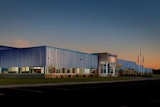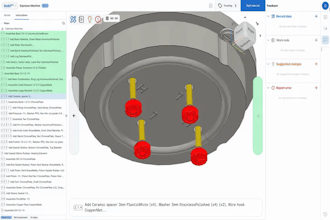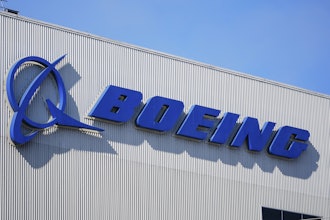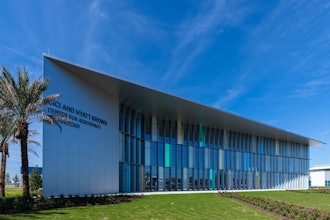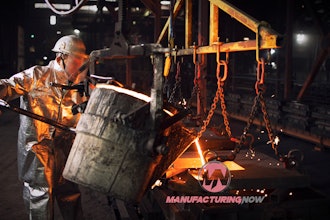
Servo drive technology controls electric motor rotation. Motion-control products such as robotic arms and elevators have benefited from the evolution of servo motors. Design professionals, manufacturers and others involved in advanced systems periodically need to upgrade drives to keep machines reliable and meet emerging client needs. Which steps should they take to arrange these installations, and what are the related necessities?
Schedule Downtime to Minimize Disruptions
Professionals overseeing servo drive upgrades should review historical and trend-based data to identify the best times to take machines offline for improvement. Considering whether a company can use alternative equipment, temporarily outsource affected production steps or perform the enhancements during less-busy months can reduce the anticipated impacts.
Leaders at an automobile manufacturing plant in Slovakia used the third option when upgrading servo motors and drives approaching the end of their usable lives. The facility uses these motion-control systems to lift and position components for two popular models, but engineers identified the existing parts as needing replacement.
Officials scheduled those upgrades during a planned summer shutdown to reduce unwanted production impacts. Executives expect numerous benefits, such as improved resilience and advantages connected to the products’ digitalized hardware that runs on modern communication networks.
Design professionals and others leading the improvements can save time and reduce confusion by studying diagrams and getting manufacturer support before taking machines offline. Receiving dependable information about average downtime periods also sets expectations and supports associated labor planning, product releases and other impacted activities.
Consider Seeking External Assistance
Some executives prioritize servo drive upgrades as part of larger digital transformation efforts. This allows design team members to provide ongoing input to shape decisions that address current challenges and enable future competitiveness.
Recently, a provider of servo drives and other automation equipment and a global consulting and technology company collaborated on a project. It resulted in integrated solutions for worldwide manufacturers intending to begin using or increase their adoption of high-tech offerings. The companies conduct continuous IT-OT analyses at clients’ facilities to identify and implement potential improvements.
Such external services accommodate leaders who want to combine servo drive technology enhancements with complementary upgrades, such as cloud computing platforms and Internet of Things sensors. The CEO of one of the participating companies said this support will enable producers to make faster, more dependable decisions with real-time data.
Consultants could also assist when legacy technology shortcomings are the main reasons behind the upgrades. The evolution of servo motors means some industrial users have technological patchworks of new and significantly outdated components. External guidance may reveal the most cost-effective and impactful ways to address this common issue.
Specialists can also provide information about relevant safety standards for servo drive-equipped machines. That knowledge protects the workforce as managers assess how motion-control systems can raise productivity and decrease inconsistencies.
Become Familiar With Over-the-Air and Software-Enabled Features
Servo drive manufacturers offer user-friendly ways to meet motion-control needs with quick enhancements. Rather than planning replacements, users can receive over-the-air updates that install on their systems with minimal or no oversight. Designers building these solutions should prioritize efficiency through distribution mechanisms such as customized interfaces.
For example, users can schedule over-the-air updates from dedicated interfaces. These tools often show when previous installations occurred, supporting accurate recordkeeping. Although some providers facilitate automatic updates, others allow scheduling outside business hours. Decision-makers unhappy with their current servo drive performance should investigate whether manufacturer-provided updates are the fastest solutions.
In other cases, companies release software features targeting identified needs. One enhancement relevant to industrial applications is a control module for modular servo presses. People can use it for processes requiring consistent pressure for a specified period. The maximum force and positioning monitors prevent tool damage and increase production visibility.
Users needing to upgrade equipment to adopt the software can purchase specialized kits with integrated safety features. The manufacturer provides free technical documents and computer-aided design files on its website to accelerate implementation. Additionally, preassembled components — including a drive controller, servo motors and force sensor — shorten installation time. Browser-based operating tools also reduce commissioning to a few minutes.
Focus on Customer Improvements Linked to Servo Drive Upgrades
Industrial leaders know proactive servo drive upgrades will reduce problems. However, impacted customers typically focus on the immediate inconveniences caused by equipment and other assets that become temporarily unavailable due to enhancements. Executives can downplay disappointment by emphasizing the eventual benefits.
India’s Mumbai Monorail operators applied that technique to a comprehensive plan to refurbish all existing train sets. This required employees to order spare parts over several months to accumulate the necessary components. One key upgrade involved ordering coupled cars from a servo drive manufacturer. The new models feature capabilities to automatically monitor and adjust motion to compensate for operator errors, signal violations, speeding and other potentially dangerous issues.
Leaders expect the extensive improvements to halve passenger wait times by August 2025 and raise travel quality. The efforts will also increase the number of trains available from eight to 18, enabling more frequent service. Highlighting the benefits encourages customers to focus on future enjoyment rather than the frustration of momentary delays.
Public-facing representatives in other industries can adopt this approach by contrasting the current situation with anticipated improvements. Amazon is a prominent user of servo drive technologies because of its significant investments in robots for repetitive tasks. Estimates suggest the company’s integrated robotic suite will raise productivity by 25% in its next-generation fulfillment centers. That means shoppers get products faster.
The best approach is to enhance motion control systems behind the scenes, so customers only experience the benefits and do not notice short-term, internal inefficiencies caused by these upgrades. However, extensive plans may require forward-thinking announcements that request patience and highlight the upcoming advantages. Dedicated email addresses for clients’ questions can help them manage anticipated impacts.
Plan Servo Drive Technology Improvements Early
Assessing the scope of servo drive updates to consider the associated costs, outage periods, stakeholder impacts and benefits allows creating thorough plans executed by parties working to achieve a shared vision. Detailed preliminary processes let industrial decision-makers participate in the evolution of servo motors by ensuring the accompanying drives meet current and expected motion-control requirements.
Employees assisting with the enhancements should also remain adaptable and open-minded to boost problem-solving capabilities during unexpected challenges.
